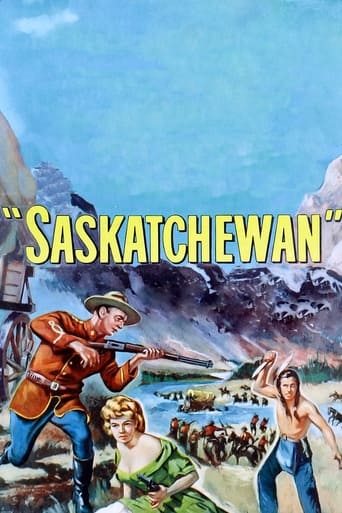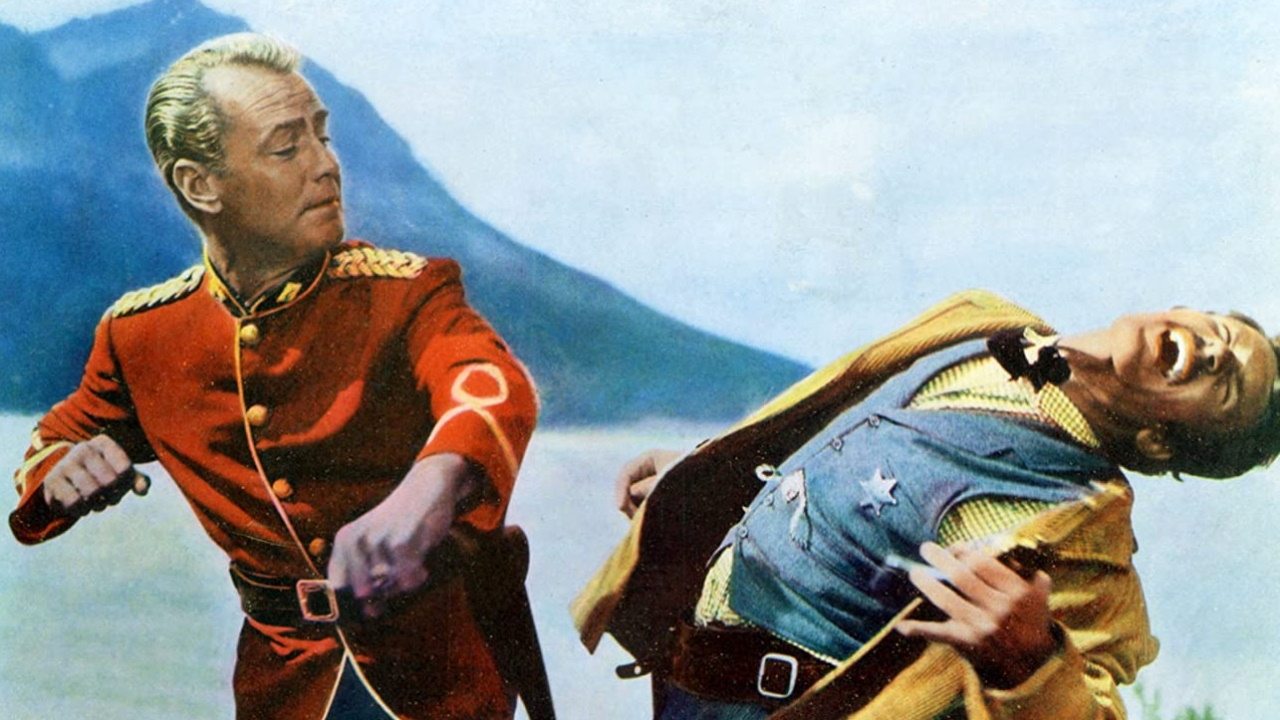Shawn Spencer
Saskatchewan is well worth watching for the spectacular scenery and cinematography alone. But in fairness, the story and acting was above average for a 1950s Western, too. The plot has been done before and some of the dialog is cliché, but if you like a reasonable effort to show a balanced portrayal of both sides of the Indian/white conflict -- you should like this movie.If you liked Alan Ladd in Shane, you'll like him here, as well. Jay Silverheels, before he became Tonto, is his adopted brother. A young Shellie Winters and J. Carroll Naish add interest.I had to laugh at all the reviews complaining about the title and noting that the film was filmed in Banff National Park which is in Alberta, not Saskatchewan. They apparently did not read the introduction which clearly stated "Saskatchewan River Territory - 1877". At that time, neither Alberta nor Saskatchewan existed as Provinces. But the Saskatchewan River, then as now, begins in what is now Banff National Park.There were a number of other complaints about the anachronistic Mountie head gear worn in this movie. I suggest they send those letters to the retired Mountie Commander who was the technical adviser for the film. Surely, he should have returned his fee if they refused his advice on such a crucial matter (sarc).
Robert J. Maxwell
Viewers will enjoy the staggering beauty of the Canadian Rocky Mountains in this no-nonsense, fast-paced, colorful story of a patrol of scarlet-coated Mounties guiding a diverse group of passengers over a perilous mountain pass while pursued and constantly noodged by Indians. The movie should have been called "Alberta" instead of "Saskatchewan," since Alberta is the province where shooting took place. But I suppose "Alberta" sounds too much like an Astair/Rogers musical, while "Saskatchewan," though longer and harder for youngsters to read and pronounce, sounds like a curse in some exotic language and implies violent action through "katch", "chew", and "chew an".The viewer should enjoy the visual splendor and remain unchallenged by the familiar story of cavalry and Indians. I don't know how the Sioux will feel about it. They're the villains of the piece.It seems that in the Canadian West of 1877, the white settlers and a handful of Royal Canadian Mounted Police lived in harmony with the local Cree Indians. The Mountie's second-in-command, Alan Ladd, is actually an adopted brother of one of the Cree braves, Jay Silverheels. So far, so reasonable -- and roughly accurate. Somehow the Canadian mountains and the high plains were absorbed into the country with a nearly complete absence of the kinds of violence that took place in that great nation to the south.Then two flies appear in the ointment. One is the post's new commanding officer, the principled but adversarial Robert Douglas, heavy of an Errol Flynn swashbuckler and a couple of other such films. He is intent on preventing the peaceful Cree from causing any trouble, so he disarms and alienates them. Mutters Silverheels, "They teach us to hunt and then they take away our means to do it."This betrayal tends to drive the Cree into an allegiance with Fly Number Two -- the American Sioux, who have just massacred General Custer at the Battle of the Little Big Horn and have now escaped across the border into Canada. Bang, bang, and then BOOM. (That's the explosion of a wagon filled with barrels of black gunpowder blowing a dozen Indians to smithereens.) Let's see. What else. Ladd mutinies against Douglas and relieves him of his service revolver and his authority. Shelly Winters joins the party in a low-cut dress, accompanied by Hugh O'Brien as a sheriff escorting her back to Great Falls, Montana, to be hanged for a killing for which the treacherous O'Brien himself was responsible. And the victim was his own brother. Well, you can see what kind of guy Hugh O'Brien is. No wonder that Ladd, half his size, keeps punching him out.The direction is by Raoul Walsh and it zips along as most of his Warners productions did. Walsh, like many old-school directors, didn't hold with psychological nonsense. A man was what a man was. Similarly, a woman was what a woman was. They were defined by their actions. No inferences allowed. You know, as a minor observation, when this movie was in first release it was criticized by some reviewers because Shelly Winters' wardrobe suggested that she had a bosom. It is to laugh. Actually, Winters' dialog, like all the rest, is concise to the point of being stilted, but she probably gives the most honest performance. Ladd seems content to glory in his blazing red coat with its gilded pips, his blue riding breeches with the gold stripes, and his black boots and silver spurs. As I said, this is colorful stuff. J. Carrol Naish, an Irish-American, is a raggedy French scout this time around. In the past he'd played Asians, Italians, Tibetans, and just about everything except a Siberian Chukchee -- and that only because nobody ever made a movie about the Chukchee. And in every role, he used the same all-purpose accent.The plot seems to have been dreamed up by a committee but the location belongs to God alone. The images make you yearn for the clean, dry, cool air of sunny Banff and a scent of pine that doesn't come out of a bottle.
alexandre michel liberman (tmwest)
In 1955 (almost sure) I was stuck with my parents in a line of more than one hour to see this film. Later, when we left the theater we were all satisfied. We had seen a beautiful scenery, Mounties and Indians, on rivers and mountains, plus an entertaining film. Seeing this film yesterday I was happy to realize that after so many years my opinion about it is just the same. Raoul Walsh has to his credit great classic westerns like "Colorado Territory", "Pursued" and "They Died With Their Boots On". "Saskatchewan" is not on their level but is better than many other westerns directed by Walsh. My impression is that the film was shot mostly in Lake Louise and the mountains surrounding it. The scenery is breathtaking and considering Walsh's expertise on grandiose scenes combining the outdoors with hundreds of people on horses you can be sure you are seeing something unique. Ladd is O'Rourke a man that was raised among the Cree and later became a Mountie. Shelley Winters, in one of her best roles is a woman pursued by the law. The Sioux, after Little Big Horn flee to Canada and try to make the Cree join them. Ladd, who knows the Cree better than his superior, does not agree with him, and is on a way to a court martial. The only way he can redeem himself is by proving that his decision was correct. Fom reading other comments I gathered many people were shocked by this film not being accurate neither by the locations where it was filmed, nor by the story. I can understand their point of view, but I still think it is a good film.
yeadur
I've been to Sakatchewan and wasn't aware of many mountains in the Big Sky province, though the film claims to have been made in the locations where the alleged story took place, but what a treat, anyway! Stunning photography (wherever!), marvellous action sequences (vintage Raoul Walshe), intimidating Sioux, Ladd at his most laconic, sexy Shelly Winters before she got fat, the excellent Robert Douglas, J Carrol Naish, Jay Silverheels and Hugh O'Brien in his pre-Wyatt Earp persona. And just think - this would have been one half of a double-bill!


 AD
AD


